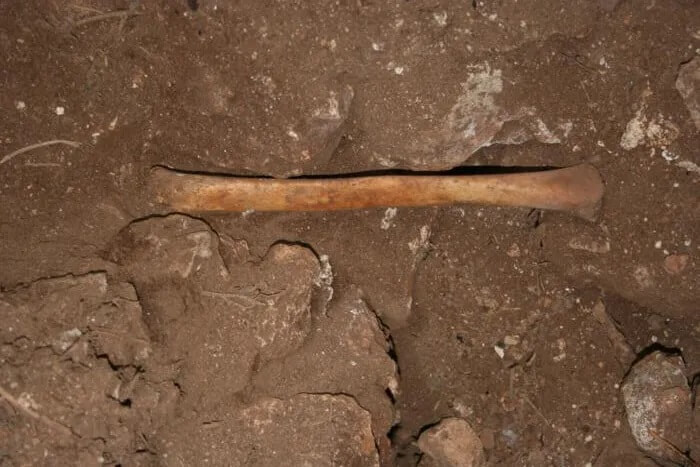By: Margaret Osborne | Smithsonian
Ancient humans in Spain may have dug up their deceased relatives to make tools from their bones—and possibly to eat the marrow within, new research suggests.
A team of scientists led by researchers from Switzerland’s University of Bern examined remains belonging to at least 12 people buried between 5000 and 2000 B.C.E., found in a cave on the Iberian Peninsula. Altogether, the pieces amounted to 411 bone fragments and 10 loose teeth.
They found several bones had been modified after the individuals’ death, including a carved “skull cup” and a tibia that had been fashioned into some type of scraping tool. The marks left from scratching and cutting the bones were distinctively a sign of human action, per the researchers—animal gnawing was only found on 3 percent of the analysed fragments. The team published their results last week in the journal PLOS ONE.
“What I think was quite intriguing is the amount of manipulated bones, as well as the extended use of the cave for funerary purposes,” study author Marco Milella, a physical anthropologist at the University of Bern, tells CNN’s Jack Guy. “Altogether these discoveries return a picture where the cave was culturally a focal point for generations.”
The bones showed no evidence of violence, so it’s unlikely they were a result of conflict between different groups, reports Christa Lesté-Lasserre for New Scientist. Though some of the bone fractures support a cannibalism explanation, the low frequency of cut marks makes this hypothesis “not fully satisfying,” write the authors in the study. Certain bones, however, appeared to have had the marrow removed, which might suggest consumption or an attempt to clean them.
Additionally, the remains did not show signs of being forcefully separated from tendons or muscles. “This suggests that the human remains were already partially decomposed when manipulated, but with the bone still being relatively elastic,” Milella tells New Scientist. “This, in turn, points to action not performed shortly after the death of the individuals, but at least some months after death.”
This could mean the living individuals knew the deceased people whose bones they were manipulating. The findings are consistent with what researchers have found in other cave burial sites in the region, suggesting bone manipulations may have been related to cultural ideas about death. Though, in an interview with the journal, the researchers say they are “far from knowing the ultimate reasons” for the observations.
“The motivations behind practices like this are actually very hard to get at, ”Katina Lillios, an anthropologist at the University of Iowa who wasn’t involved in the study, tells Business Insider’s Jenny McGrath, though she adds that it may signify a continuing relationship between the living and dead. “They continued to engage with their dead, and so this tells us that the dead were important for the living.”
Next, the team plans to conduct DNA analysis of the remains to see how the individuals in the cave may have been related to one another, per New Scientist.
* * *
NEXT UP!
Gobekli Tepe: The World’s First Temple?
Six miles from Urfa, an ancient city in south-eastern Turkey, Klaus Schmidt has made one of the most startling archaeological discoveries of our time: massive carved stones about 11,000 years old, crafted and arranged by prehistoric people who had not yet developed metal tools or even pottery. The megaliths predate Stonehenge by some 6,000 years.
The place is called Gobekli Tepe, and Schmidt, a German archaeologist who has been working here more than a decade, is convinced it’s the site of the world’s oldest temple.
* * *
READ MORE: This Ancient Maya City Was Hidden In The Jungle For More Than 1,000 Years
More Archaeology News: Guanches: Ancient Mummies of The Canary Islands (Video)
Liked it? Take a second to support Collective Spark.
We’d love to hear from you! If you have a comment about this article or if you have a tip for a future Collective Spark Story please let us know below in the comment section.

